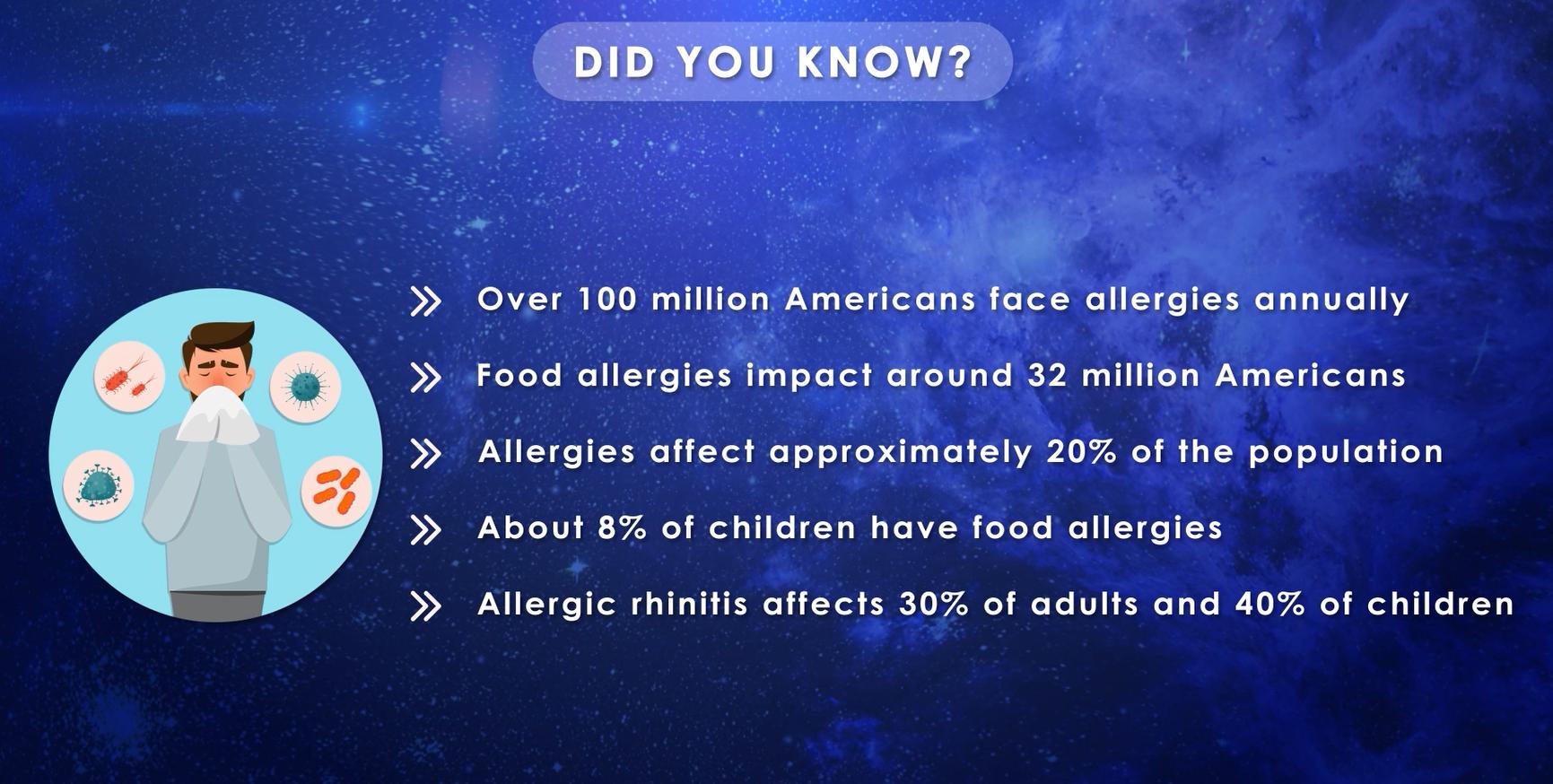Have you ever experienced the thrill of exploring new cuisines, only to have your culinary adventure abruptly halted by a food allergy? In a world where flavors entice and aromas beckon, food allergies can act as unexpected gatekeepers, limiting our gastronomic journeys. Understanding the nuances of food allergies is not just about dietary restrictions; it’s about navigating a complex landscape where a single bite can trigger a cascade of reactions. Join us on a journey through the realm of food allergies, where knowledge is the key to unlocking a world of safe and satisfying dining experiences.
Table of Contents
- Understanding Food Allergies: Unraveling the Basics
- Identifying Common Food Allergens: Know What to Look For
- Managing Food Allergies: Tips for a Safe and Enjoyable Dining Experience
- Empowering Individuals with Food Allergies: Building a Supportive Environment
- Q&A
- Key Takeaways


Understanding Food Allergies: Unraveling the Basics
Understanding food allergies is crucial in navigating the complex world of dietary restrictions. Did you know that food allergies occur when the immune system mistakenly identifies a harmless food protein as a threat? This triggers an allergic reaction that can range from mild discomfort to life-threatening symptoms, emphasizing the importance of accurate diagnosis and management.
Symptoms of food allergies can vary from person to person, making it essential to be aware of common signs such as hives, swelling, difficulty breathing, or digestive issues. By identifying trigger foods and maintaining a strict avoidance diet, individuals can effectively manage their food allergies and prevent adverse reactions. Remember, consulting with a healthcare professional and conducting proper allergy testing is key to understanding your specific food sensitivities. Stay informed, stay safe, and embrace a lifestyle that prioritizes your health and well-being.

Identifying Common Food Allergens: Know What to Look For
In the realm of food sensitivities, awareness is key. When it comes to identifying common food allergens, a keen eye for specific ingredients can make all the difference for those with dietary restrictions. To navigate the landscape of potential allergens, it’s crucial to familiarize yourself with the usual suspects that often trigger adverse reactions in individuals.
Certain foods tend to trigger allergic responses more frequently than others. These common allergens include peanuts, dairy products, shellfish, eggs, soy, wheat, and tree nuts. By being mindful of these ingredients and carefully reading food labels, individuals can take proactive steps to avoid consuming substances that may cause allergic reactions. Here’s a quick reference table outlining these common food allergens:
| Allergen | Common Source |
|---|---|
| Peanuts | Snack bars, Asian cuisine |
| Dairy Products | Milk, cheese, yogurt |
| Shellfish | Shrimp, crab, lobster |
| Eggs | Baked goods, mayonnaise |
| Soy | Soy sauce, tofu, edamame |
| Wheat | Bread, pasta, cereals |
| Tree Nuts | Almonds, walnuts, cashews |
By understanding the nuances of food allergies and being vigilant about ingredient lists, individuals can navigate the intricacies of dietary restrictions with confidence and ensure their well-being is prioritized. Remember, knowledge is power when it comes to identifying common food allergens and making informed choices about what goes into your body.

Managing Food Allergies: Tips for a Safe and Enjoyable Dining Experience
When it comes to managing food allergies, preparation is key to ensuring a safe and enjoyable dining experience. To navigate the culinary landscape with ease, consider the following tips:
- Communicate Clearly: Inform the restaurant staff about your food allergies in advance. Clearly communicate your dietary restrictions to ensure that your meal is prepared safely.
- Read Labels: Be diligent in reading food labels and asking questions about ingredients when dining out. Don’t hesitate to inquire about menu items and how they are prepared to avoid any potential allergens.
- Bring Your Own: If you’re unsure about the ingredients used in a dish, consider bringing your own alternatives such as condiments or snacks to supplement your meal.
| Tip | Description |
|---|---|
| Avoid Cross-Contamination | Ask about kitchen practices to prevent cross-contamination of allergens in your meal. |
| Research Restaurants | Prior to dining out, research restaurants that offer allergy-friendly options to make informed choices. |
By following these guidelines and staying informed, you can enjoy a worry-free dining experience while prioritizing your health and well-being.


Empowering Individuals with Food Allergies: Building a Supportive Environment
In a world where dietary restrictions can sometimes feel isolating, creating a community that embraces and supports individuals with food allergies is essential. By fostering an environment that understands and accommodates these unique needs, we can empower those affected to live their lives to the fullest. Through education, awareness, and compassion, we can turn what may initially seem like a limitation into an opportunity for growth and connection.
Here are some ways we can cultivate a supportive space for individuals with food allergies:
- Hosting community events centered around allergen-free cooking classes and recipe swaps.
- Establishing online forums or support groups for sharing experiences and resources.
- Working with local restaurants and food establishments to provide clear allergen information and safe dining options.
- Collaborating with healthcare providers to offer educational sessions on managing food allergies effectively.
| Event | Date | Location |
|---|---|---|
| Allergen-Free Cooking Class | Every 2nd Saturday | Community Center |
| Food Allergy Awareness Workshop | Monthly | Local Library |
Q&A
Q: What are common symptoms of food allergies?
A: Food allergies can manifest in various ways, including hives, itching, swelling, abdominal pain, vomiting, and even more severe symptoms like anaphylaxis.
Q: How are food allergies diagnosed?
A: Diagnosis often involves a combination of detailed patient history, skin prick tests, blood tests, and in some cases, oral food challenges conducted under medical supervision.
Q: Can food allergies develop later in life?
A: Yes, food allergies can develop at any age, even in adults who have previously had no issues with certain foods. It’s essential to be aware of potential new allergies and seek medical advice if any symptoms arise.
Q: How can someone manage food allergies in their daily life?
A: Managing food allergies involves diligent label reading, communicating dietary needs effectively, carrying emergency medication like epinephrine, and being proactive in avoiding allergens in both food and non-food products.
Q: Are there any promising treatments for food allergies on the horizon?
A: Research into treatments like oral immunotherapy and biologics offers hope for the future of food allergy management. However, it’s crucial to consult with allergists and stay informed about the latest advancements in the field.
Key Takeaways
As you embark on your journey to understanding and managing food allergies, remember that knowledge is power. By staying informed, making wise choices, and advocating for yourself and others, you can navigate the world of food with confidence and peace of mind. Whether you’re personally affected by food allergies or seeking to support someone who is, remember that compassion, awareness, and communication are key. Together, let’s create a more inclusive and understanding environment where everyone can enjoy a safe and delicious culinary experience. Thank you for joining us on this insightful exploration of food allergies. Stay curious, stay safe, and savor each moment and meal with appreciation and joy.




0 Comments